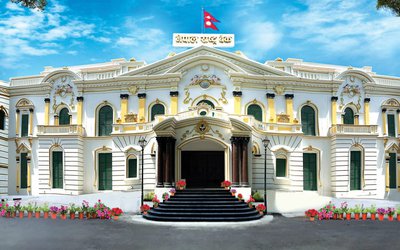
International Monetary Fund (IMF) said that recent Macro-Economic Developments Real GDP growth is estimated at 6.3 percent in 2017/18. Growth rebounded to 7.9 percent in 2016/17, after a slump due to the 2015 earthquakes and trade disruptions. Remittances set a new record of US$688 million in July. For 2017/18 as a whole, remittances were US$7.2 billion, up 10 percent from a year ago.
Headline inflation rose to 4.6 percent (y/y) in July. Nonfood inflation amounted to 5.1 percent. Nepal’s inflation has moved broadly in line with India’s inflation since early 2017. The real effective exchange rate of the Nepali rupee has been about 14 percent above the 2010-14 average. The recent weakening of the rupee/US$ rate could lower that.
According a press release issued by IMF’s Resident Representative in Kathmandu, Central bank reserves (including gold and SDR holdings) amounted to US$9.3 billion in mid-July, covering about 7.8 months of prospective imports.
Spending expanded more rapidly than revenue, causing the deficit (based on below-the-line financing data) to rise by 3.8 percent of GDP to 6.7 percent of GDP in 2017/18. As a result, Nepal’s gross and net public debt both rose by 3½ percent of GDP in 2017/18, to 29.7 and 25.6 percent of GDP, respectively.
FCGO data indicates that revenues rose by 17 percent (year-on-year) during the last 3 months of the fiscal year. For 2017/18 as a whole, revenue was up 19 percent. Central government spending rose 3 percent (y/y) during the last 3 months. For the fiscal year, central government spending (incl. transfers to local govs.) rose 34 percent. Gross domestic debt amounts to about NR 400 bn. Large variations in government deposits at the central bank lead to large variations in net domestic public debt.
Recent External and Monetary Sector Developments Imports and exports are up by 34 and 20 percent (y/y, on a 3mma basis), respectively, from a year ago. Private credit growth firmed to 22 percent in July (y/y). Strong imports are raising the trade deficit. This contributed to a current account deficit of US$2.3 billion, despite firming remittances. Reserve money expanded by 8 percent (y/y) in July.
Amid firming private sector credit growth, M2 growth rose to 19 percent (y/y) in July. Commercial banks’ lending interest rates are inching up. Interbank rates had stabilizing at 4 pct on implementation of the interest rate corridor but have recently fallen. By late August, stock prices were down 25 percent from a year ago. Bank stocks were down by the same amount.
Net claims on government Other net domestic assets Net foreign assets Reserve money growth (y/y) Central Bank Balance Sheet (In percent, contribution to reserve money growth) Sources: Nepali authorities; and IMF staff estimates.
Nepal’s growth has lagged peers and per capita GDP remains lower than in other Asian countries. Nepal’s exports have been growing slower than GDP and are lower than in most peers. Inflows of foreign direct investment (FDI) in Nepal remain small.
According to IMF, As a result, the stock of FDI is much smaller than in peer countries. On the other hand, compared to other countries, Nepal has high remittances. Poverty declined to 24 percent of the population in 2010/11, thanks in part to the growth of remittances. Poverty is higher in rural and mountainous areas. The decline in poverty is reflected in an improvement in Nepal’s UNDP Human Development Index.
Nepal and the IMF: updated charts on recent economic developments
- India Supported Construction Of Four Schools In Nuwakot
- Mar 19, 2021
- Nepal Denies Permission For Third Phase Trial Of Vaccine Against COVID-19
- Aug 31, 2020
- Messi Can Only Cancel Barcelona Contract If €700 Million Release Clause Is Paid, La Liga Confirms
- Aug 31, 2020
- India To Carry Out Study On Kathmandu-Raksaul Railway
- Aug 28, 2020
- COVID-19: 1,351 Personal Of Nepal Police Infected
- Aug 28, 2020















